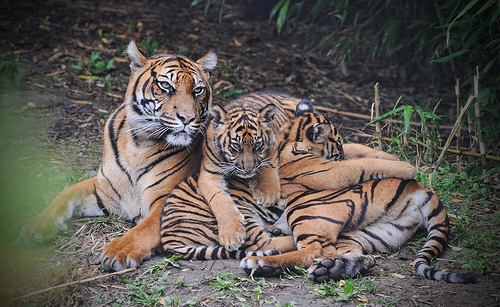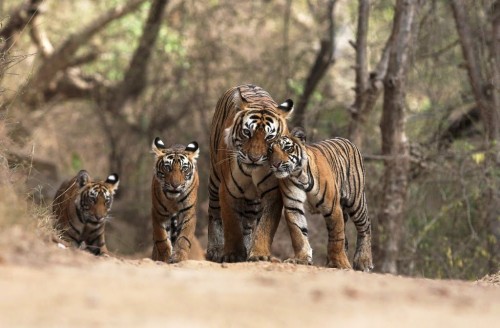In a research published today (17 April) by Stanford scholars, scientists have found that it is not just numbers but genetic diversity that will help save the tigers from extinction. Having lost 90 percent of their historical habitat almost half of the 3000 wild tigers in the world today live in India in national parks and reserves spread in fragmented habitats throughout the country.
“Numbers don’t tell the entire story,” said study co-author Elizabeth Hadly, the Paul S. and Billie Achilles Professor in Environmental Biology at Stanford and senior fellow at the Stanford Woods Institute for the Environment.
The researchers say that as populations of tigers have begun to live in fragmented areas their genetic diversity too has reduced. If tigers from one area are allowed to mate with tigers in another area it will ensure genetic flow and the resultant offspring will have a better chance of survival.
They added that restricted areas lead to loss of genetic diversity which can in future also lead to lower reproduction rates, faster spread of disease and more cardiac defects, among other problems.
Tigers in the Next 150 Years
To understand the tiger populations and their habitats the Stanford scholars studied the wild cats in the Indian subcontinent. They used a novel method that was previously used to study ancient DNA samples. This helped them know what exact number of tigers would be necessary to maintain genetic diversity and safeguard it from extinction.
The results showed that for tiger populations to maintain their current genetic diversity 150 years from now, the tiger population would have to expand to about 98,000 individuals if gene flow across species were delayed 25 years. By comparison, the population would need to grow to about 60,000 if gene flow were achieved immediately.
But the researchers say that neither of these numbers is realistic because of the limited habitat and resources available to tigers.
Study co-author Uma Ramakrishnan, a former Stanford postdoctoral scholar in biology and current researcher at the National Centre for Biological Sciences in Bangalore, India says that if sub-population of present day tigers do not interbreed, there future is very dim.
“Since genetic variability is the raw material for future evolution, our results suggest that without interbreeding subpopulations of tigers, the genetic future for tigers is not viable.”
Importance of Tiger Corridors
Inter-connected tiger reserves are the best possible way to go forward in order to save tigers. The scientists feel that because migration and inter-breeding of sub population is much more important than mere increasing of numbers, conservation efforts should be targeted on giving tigers routes to travel long distances.
Another idea is to keep cross-breeding tigers of different wild populations and also captive tigers, which till now has not been done.
“This is very much counter to the ideas that many managers and countries have now – that tigers in zoos are almost useless and that interbreeding tigers from multiple countries is akin to genetic pollution,” said Hadly. “In this case, survival of the species matters more than does survival of the exclusive traits of individual populations.”
The researchers say that the same approach could be used to analyse the significant number of other endangered species. They also give the example of Florida Panthers, another predator. Since individuals from a closely related panther subspecies were introduced to the population, Florida panthers have seen a modest rise in numbers and fewer cases of genetic disorders and poor fitness.
Indian national parks are one of the best preserved wild reserves in the world today, home to about 1706 wild tigers. To give these tigers a future it is now important to allow them to migrate, move and inter-breed. Tigers do not only need a place to stay but also to move – something that has to be a part of infrastructure planning too as cities, towns and highways expand.
More Related Stories,
Three Tiger Cubs seen in Ramnthambore
Sunderban Tigers Closely Related to Tigers of Central India
Scientists Successfully Sequence Entire Tiger Genome
Image via cc/Flickr by JP







One thought on “Save Genetic Diversity to Save Tigers”